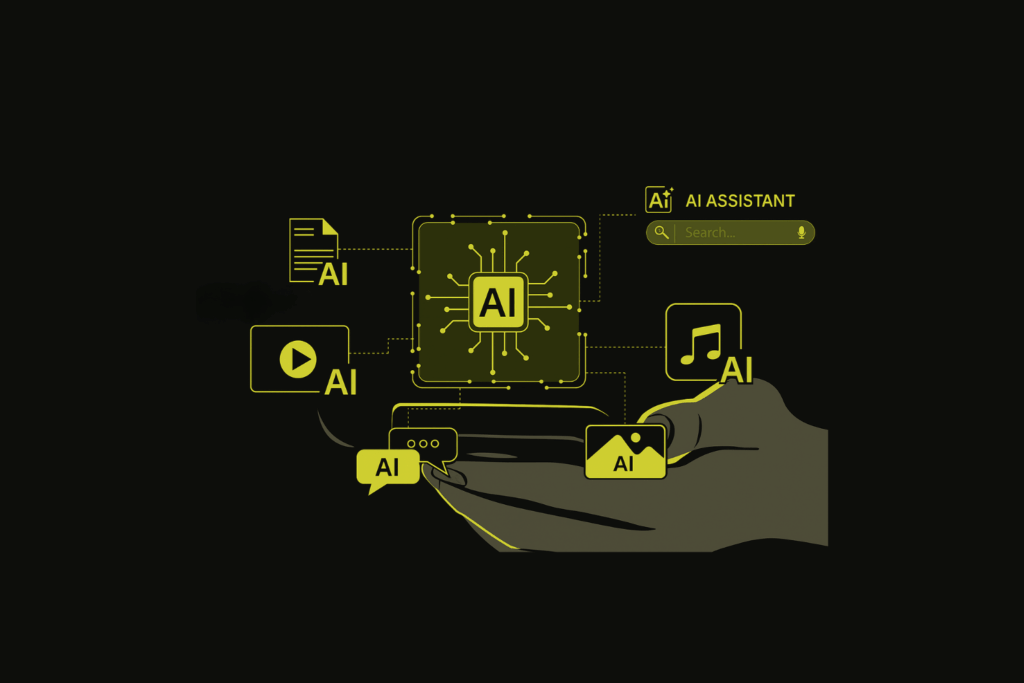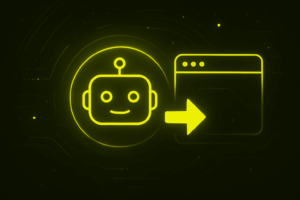The idea sounds tempting: building your own chatbot or AI agent with just a few clicks that automates tasks, analyzes data or communicates with users. Thanks to so-called no-code bot builder tools or applications, which can often be used to build AI assistants and chatbots without any programming knowledge using drag and drop, it is now easier than ever to get started. However, those who believe that this paves the way for professional AI agents often underestimate the technical and organizational challenges and risk failing due to the limitations of do-it-yourself approaches. The following article shows in a practical way when it is worth building a chatbot yourself and where the limits of the DIY approach lie.
Before moving on to implementation, it is first necessary to clarify what is actually behind a „real“ AI agent. In contrast to a classic chatbot or voice assistant, an agent can act independently and is often connected to tools via corresponding APIs in order to perform its tasks. A real AI agent has:
- LLMs (Large Language Models) such as GPT-5 or Claude for language processing,
- Tools and interfaces (APIs) for executing actions,
- Memory structures for contextual reference and
- an autonomous logic that enables decisions to be made without manual input.
Finding a suitable framework is the only requirement in terms of technical implementation in no-code applications (e.g. Langflow, BotBuilder, Zapier Chatbots). Often these tools also offer to upload documents so that the assistant can answer specific questions about the company or certain processes. Together with automation tools such as Zapier, n8n or Make, the self-created assistants can then also be connected to tools so that they can, for example, send emails or make calendar entries independently. These connections are often set up within a very short time, saving expensive development costs.
Limits of the self-build approach
Even if no-code tools make it easier to get started, they often reach their limits in many application scenarios, for example with:
- Complex interface integration: If the software or tools to be accessed by the agent differ from standard products, it quickly becomes clear that there are often no existing APIs or interfaces with which the agent could communicate. At best, this requires complicated workarounds; at worst, such a connection can only be realized at disproportionately high cost.
- Security requirements: In regulated industries, GDPR, ISO standards and internal compliance requirements must be observed. Here, uploading company-specific documents to one of the provider platforms can be an exclusion criterion. In-house hosting is also not possible with many providers, as access is only possible via the cloud.
- Maintenance and further development: APIs change, models become obsolete, security gaps arise – without ongoing maintenance, the agent quickly becomes a risk. In addition, users have no influence on changes made by third-party providers. As a result, the agent may behave differently from one day to the next than originally created.
- Lack of internal expertise: Without experienced developers, there is a risk of an endless loop of bugs, debugging and frustration.
Practical example 1: AI voice agent to ease the burden on customer service
A medium-sized car dealership wanted to relieve the telephone customer service department, as the employees had to answer telephone inquiries about opening hours and appointment bookings in addition to their work in sales and the workshop. Using a no-code tool, a tech-savvy employee quickly set up a voice assistant and the connection to the telephone number worked without any problems. The initial tests were promising: the agent was able to answer simple questions about the dealership and recognized customer data reliably. However, when it came to
After several attempts and consultations with the support team, the dealership decided to seek professional help froma specialized agency. The agency developed a customized solution that connected the AI agent with the appointment booking system and was able to successfully implement the project – albeit with more effort than initially planned.
Practical example 2: AI-supported onboarding chatbot for a mechanical engineering company
Another example that also shows the limits of no-code approaches is that of a mechanical engineering company that wanted to optimize its onboarding process for new employees. The plan was to provide all new employees with a virtual chat assistant as a direct mentor who could answer questions about the company and processes at any time. A no-code chatbot tool was used as a simple and quick-to-implement solution. The initial tests with fictitious data went well and the chatbot was also easy to integrate into the existing knowledge management tool. However, when it came to making company data available to the chatbot, it quickly became clear that much of the data required for this also contained confidential company information that must not be uploaded to external third-party servers such as the chatbot tool used. Although the no-code approach was therefore theoretically well suited to testing the functionalities, it did not hold up in practice with regard to the strict data protection requirements.
When is self-build worthwhile – and when is it not?
A self-built agent or chatbot can be useful if:
- to answer simple questions about the company,
- commercial and widely used tools are to be connected with corresponding interfaces,
- no business-critical data needs to be uploaded to the third-party cloud,
- self-hosting is not absolutely necessary,
- only a small budget is available and
- internal IT expertise is available at the same time.
However, as soon as high security requirements, complex integrations or scaling issues come into play, implementation by a professional IT service provider is not only recommended – but often indispensable.
Conclusion: Professional chatbots need professional implementation
The democratization of AI technologies is a step forward – but not a free pass for building complex agent systems yourself. If you want stable, secure and scalable solutions in the long term, you should rely on the expertise of specialized IT experts at an early stage. After all, a simple chatbot can be built quickly. For many areas of application, however, more is usually required.



